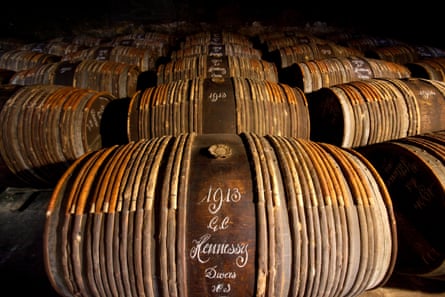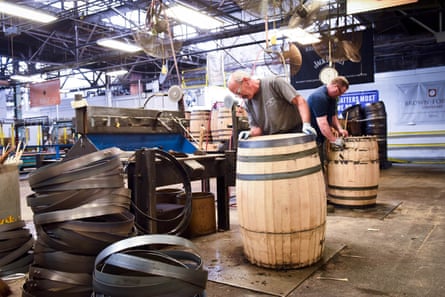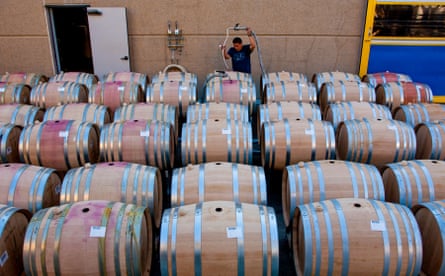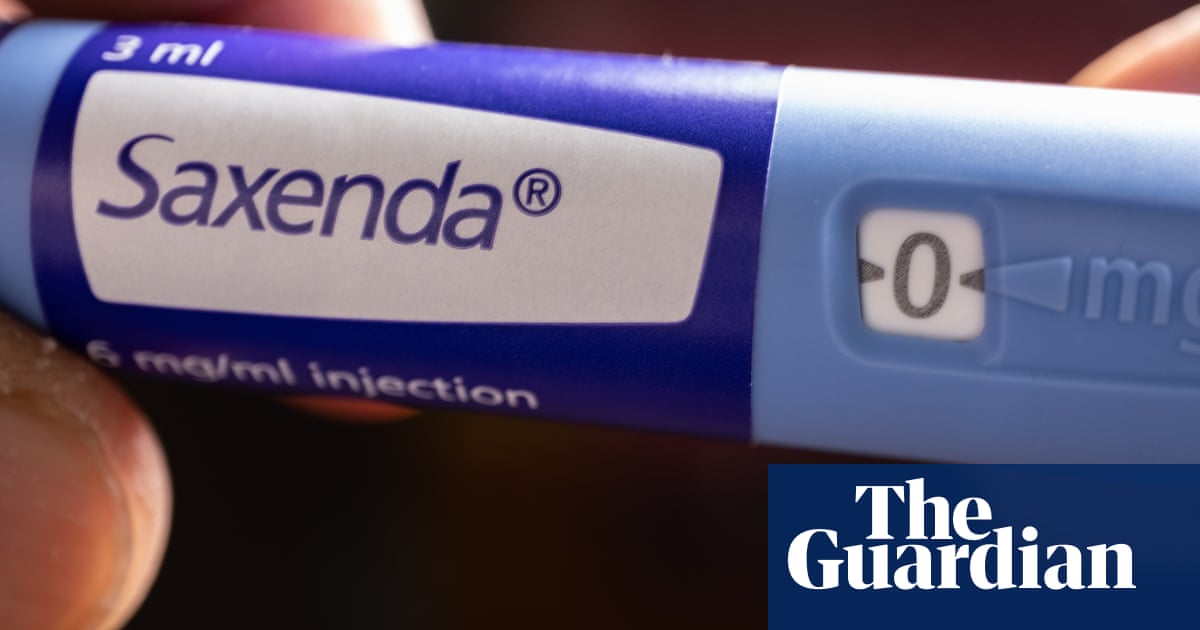No one at Tucson’s Hamilton Distillers knows exactly what wood the cognac barrels holding whiskey are made of.
“Probably Spanish oak?” one employee ventures a guess. The age of the barrels is also a question mark. No one working here is old enough to vouch for that; the distillery believes they are anywhere from 100 to 125 years old, which is old in the grand scheme of barrels’ lifespans, but not unusual. But it can say with certainty, using records of its vintages, that these barrels are on their fifth use – at least.
In the alcohol industry, when ageing liquor can easily take decades, the vessels that house them can also become more covetable over the years. In an age of disposable materials and dire news of plastics polluting our environment, reused wooden barrels exist in stark contrast. The lives of barrels are long, shockingly sustainable and currently imperiled by trade war.
Many circumnavigate the globe and end their days in distilleries in remote corners of the world, originating in the forests of Hungary and moving from mountain towns in Canada to distilleries in the Caribbean and Mexico. At Hamilton, new American oak barrels hold fresh distillate, alongside the dinosaurs: French cognac barrels that show their age. They’re gray, stained and a little warped.
Laws Whiskey House in Denver, Colorado, considers itself a “terroir-forward distillery”, the distillery’s brand manager, Casey Rizzo, told me over the phone. Terroir, the flavor that emerges from a specific environment, comes from both grain and barrels. “White American oak has a lot of natural wood sugars and natural vanillin. When you’re charring a barrel, you’re caramelizing it like a creme brulee. A barrel pulls whiskey in and then pushes it back out. Whiskey goes into the barrel clear and comes out with all that color, and vanilla and caramel flavors.”

Rizzo added: “We think of barrels as teabags. It gets used first for bourbon, like the first steep of a teabag. You get a lot of color and flavor from the barrel quickly. If you use the barrel again, it’ll take longer to impart, so maybe it’s used for scotch, which sits and ages longer. You mute the barrel’s flavors along the way.”
Modern distilling relies on increasingly sophisticated technologies for monitoring conditions in cellars and fermentation, but distilleries still depend on low-tech barrels to impart flavor and color to their products. Barrels consist only of wood and steel hardware, held together with no glue or nails. Remove its rings and give it a smack, and a barrel can unfurl like a chocolate orange. At some distilleries, employees still rotate their barrels by hand, a practice called clocking (rolling barrels according to a clock’s face). “This ensures proper exposure to the varying temperatures within the warehouse and adds consistency from barrel to barrel,” said Frank Krockenberger, director of hospitality for Loretto, Kentucky’s Star Hill Farm, home of the Maker’s Mark distillery.
It was one stop on my journey to follow how barrels – so important for the beverage industry – are made. As a food and beverage writer, much of my work dredges up stories about monumental food waste, and the struggle to repurpose materials. But when it came to barrels, I found practices that were surprisingly sustainable, of wood being reused for centuries, and forests being protected.
How to make a wine barrel
Just as Kentucky is the epicenter of bourbon, so too is it the headquarters of bourbon barrel production. An hour away from Maker’s Mark, in Louisville, I witnessed the birth of American oak barrels at the Brown-Forman Cooperage, which produced barrels exclusively for the Cooper’s Craft and Jack Daniel’s brands, at least in terms of their first use (however, the cooperage recently closed, with the Kentucky Distillers’ Association citing changing consumer trends, European Union tariffs and taxes as reasons for the industry’s decline).
Machines carved staves (the vertical planks of a barrel), and master coopers (the craftsmen who make barrels) hammered hoops around them before charring them on a rotating belt with enormous bursts of flame. The scene blended with modern efficiency and ancient technology (Roman historian Pliny the Elder wrote about coopers near the Alps who stored their wine in hooped wooden vessels, and there is archaeological evidence of barrels from ancient Egypt). The business had churned out barrels since 1945 and produced over 60,000 barrels annually. But starting this year, Brown-Forman will now source barrels externally.
Oak is commonly used for barrels, due to the ease of carving it, its durability in holding liquid (it is unlikely to warp or crack) and its ability to impart desirable flavors to spirits. But not all barrels are made of oak. I encountered barrels made from chestnut, hickory and maple, as well as more exotic woods used in the ageing of specialty products (Hawaiian koa used to age sugarcane rum, and Brazilian amendoim bravo used to age cachaça, for example). I also found hybrid barrels in Patron’s distillery, their bodies composed of Brown-Forman American oak staves, and their heads (the ends of the barrels) made of French limousin oak.

The barrel-making process is zero-waste and astonishingly fast. It takes a cooper about 45 seconds to raise a single barrel. Sawdust is collected and used for horse and cow bedding. These barrels are frequently shipped flat, so “we don’t ship air”, one cooper told me, and are reassembled at their destinations.
I found Brown-Forman’s trademark “B” stamp on dozens of rusted hoop rivets, 1,900 miles away in the cellars and storage rooms of Don Fulano in Jalisco, Mexico. In the ageing rooms of a different tequila distillery, Volcán, I found barrels containing decade-old tequila held together by rivets stamped with Bs. The trained eye can spot other signs of where a barrel came from, said Greg Roshkowski, the vice-president of wood planning, procurement and processing at Brown-Forman, Jack Daniel’s and Cooper’s Craft’s parent company, wrote via email. He said some experts “will be able to spot Brown-Forman barrels by other various characteristics, such as the head placement, chime (the beveled edge of a barrel, where the staves meet), locations of hoops, etc. It’s certainly fun to walk through other countries and their warehouses and see 50- to 60-year-old Brown-Forman barrels ageing all sorts of spirits from rum to scotch and Irish whiskey.”
The international use of barrels is part and parcel of the global liquor industry. Large conglomerates like LVMH, Brown-Forman and Suntory have multiple spirits brands in their portfolios, and barrels make their rounds internally. A Kentucky-made barrel might end up in Scotland to age scotch because Brown-Forman owns both the Jack Daniel’s and Glendronach brands.
Given the barrels’ long lives and travels, makers are investing in regenerative cultivation of their raw materials. Though mature white oak trees are plentiful, the species could be on the decline, primarily due to a “lack of active management that creates the conditions needed for oak seedlings to thrive”, according to the US Department of Agriculture’s Forest Service. Maker’s Mark, part of Suntory, partnered with the University of Kentucky in a genome-mapping project of the American white oak to preserve the species. The partnership has also led to the establishment of the world’s largest repository of American white oak trees. It’s 24 acres with nearly 10,000 trees representing more than 400 varieties of white oak, among other sustainability initiatives.
The barrel-flavor equation
Sustainability isn’t the only concern. Manipulating flavors with barrels is a science and art. Roshkowski said: “[The barrels] are part of their recipes. You’ll see callouts for once-used Jack Daniel’s barrels from Scotland to Guyana, Russia to Malaysia and beyond. These barrels will live on for another 30 to 50 years ageing fine spirits, coffee beans, honey, soy sauce or Tabasco.”
Lucas Assis, an agave and sugarcane spirit educator, said: “Fortaleza used charanda [a rare Mexican sugarcane rum] barrels for their winter blend [last year],” he said. “Barrels tell a story. It doesn’t matter how many times you use it. French oak is still going to bring back chocolate or spiciness. Brazilian amburana wood gives a cinnamon finish.”
Distilleries that aren’t owned by large conglomerates enlist the help of a barrel broker who can source unique barrels. Mara Smith sources old pinot noir barrels from France through a broker, as they give her Inspiro tequila a rosy hue and flavors like “berries, some nuttiness, a floral [aroma] on the nose”.
Barrels foster circular economies. I see Whiskey Del Bac barrels at Tucson’s Monsoon Chocolate. “We get mesquite-smoked whiskey barrels a couple days after they’ve been drained, then we take refined chocolate, put it into nut milk bags, cut the top of the barrel off, and age the chocolate for four to six months. Cocoa butter is the carrier of aroma in chocolate, so it’s sitting there, absorbing the barrel’s aroma,” said Adam Krantz, the company’s founder.
I bite into the barrel-aged chocolate, tasting whiskey and smoke. A barrel is near the end of its life when it gets to Monsoon. Slicing it open for chocolate renders the barrel useless for anything other than furniture, planters and a rather stunning variety of items such as golf ball holders, ax targets, lazy susans and more, all under the Wine Enthusiast product umbrella.

In remote, mountainous Banff, Canada, Park Distillery sources barrels from wineries and other distilleries. “We are looking for sweet and rich flavors from the barrel. Lignin, vanillin, tannins and lactones are some of the important compounds in the wood,” said master distiller Scott Coburn. Like Tucson’s Hamilton Distillers, the operation is relatively small, and it receives assembled barrels. After about three uses for whisky (which must be aged for a minimum of three years in Canada), it uses them for barrel-aged gin and cocktails. Then the barrels are passed on to breweries for barrel-aged beer. Once spent, the barrels meet their end in Banff’s restaurants as decoration.
Rizzo outlines a Laws Whiskey barrel’s typical lifespan. “We age our Four Grain Bourbon and send those used bourbon barrels [after four to 10 years] to a local apiary, Bee Squared, in Berthoud, Colorado. They age their honey in those used barrels for 90 days to produce a glorious local barrel-aged honey. We then get those barrels back and put more bourbon into them to make a natural honey-aged bourbon [which takes a year and a half of ageing]. One went to our friends at Lady Justice Brewing, who aged a honey bock beer in the honey barrel. Once that was finished in six months to two years, they put malted barley grain inside the barrel for another six months to two years to flavor the grain to produce another beer. And then the barrel is made into furniture.” These barrels had seven lives.
But barrels’ travels are in danger
Recent tariffs are making the very aspect of manufacturing barrels, distilling alcohol and selling its finished product more expensive. In American winemaking, particularly in California, French oak barrels will be affected by the EU’s retaliatory tariffs. Since barrels are essentially an ingredient in any given type of alcohol’s recipe, a winemaker would not be able to easily switch out a type of wood they’ve used previously for something available domestically.
Since tariffs are duties placed on imported goods, used barrels costs are spiking, whether they’re entering the US or departing it (due to retaliatory tariffs).
American spirits companies saw the effect that potential tariffs had on Canada immediately, as their products were pulled off Canadian shelves in February, in response to the 25% tariffs on Canadian goods that the Trump administration had put in place then. This has been a particular blow to American bourbon and cooperages, conjoined industries already imperiled by changing consumer tastes.
“Even when barrels aren’t directly targeted by tariffs, they’re deeply tied to the global trade of the products they help create – bourbon, wine, tequila, rum. Tariffs on those goods ripple down to the barrel market. Producers are scaling back how much they’re ageing and how far ahead they’re willing to invest, and that’s hit the barrel world hard. Used bourbon barrel prices have dropped nearly 50% in the past six to eight months. “Some days, it feels like they’re falling by the hour,” said Matt Albrecht, owner of River Drive Cooperage in Buxton, Maine, who also sells and sources used barrels.
“It’s a perfect storm,” said Albrecht. American producers are now rushing to empty barrels and bottle their spirits ahead of expected tariffs and are flooding the market. “Meanwhile, international buyers, many of whom were paying top dollar for barrels just last year, are holding off, betting that prices will drop even further if the US economy stumbles. That’s led to a standoff: supply is high, demand is frozen and prices are volatile.”
The consequences of this current disruption in the barrel economy might not be seen for years. “What’s on the market today started as trees harvested years ago. It takes at least two to four years to go from log to freshly emptied bourbon barrel, often longer,” said Albrecht.
After the 2008 recession, there was a barrel shortage in 2012, which meant there was four-year lag in the barrel supply chain. One can only hope that these emblems of sustainable, circular economies may continue to age gracefully, their journeys unhindered by tariffs.

 5 hours ago
8
5 hours ago
8













































